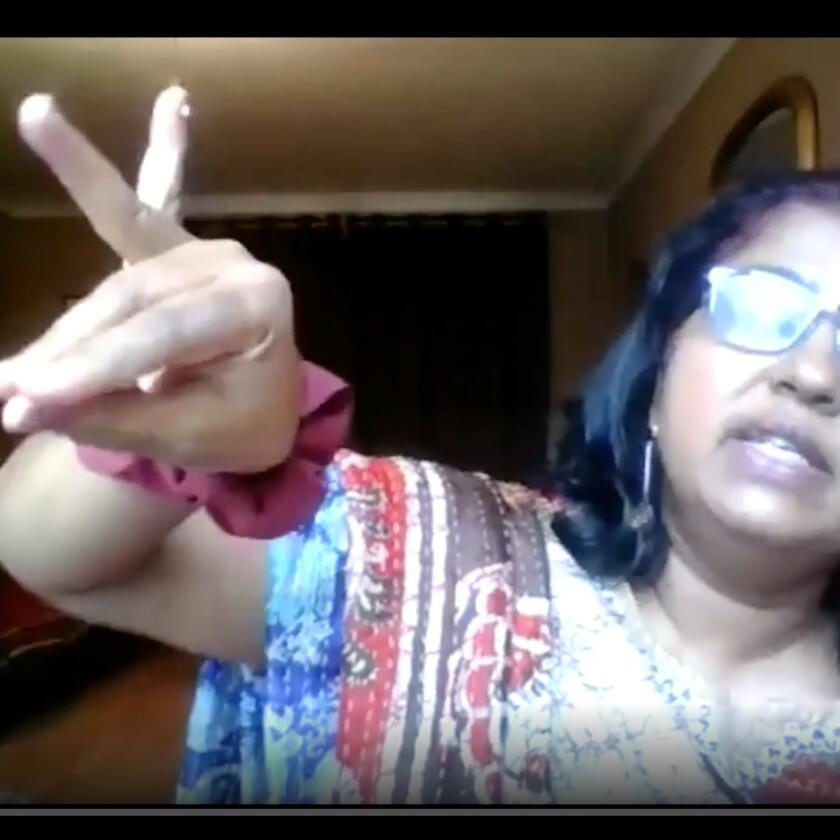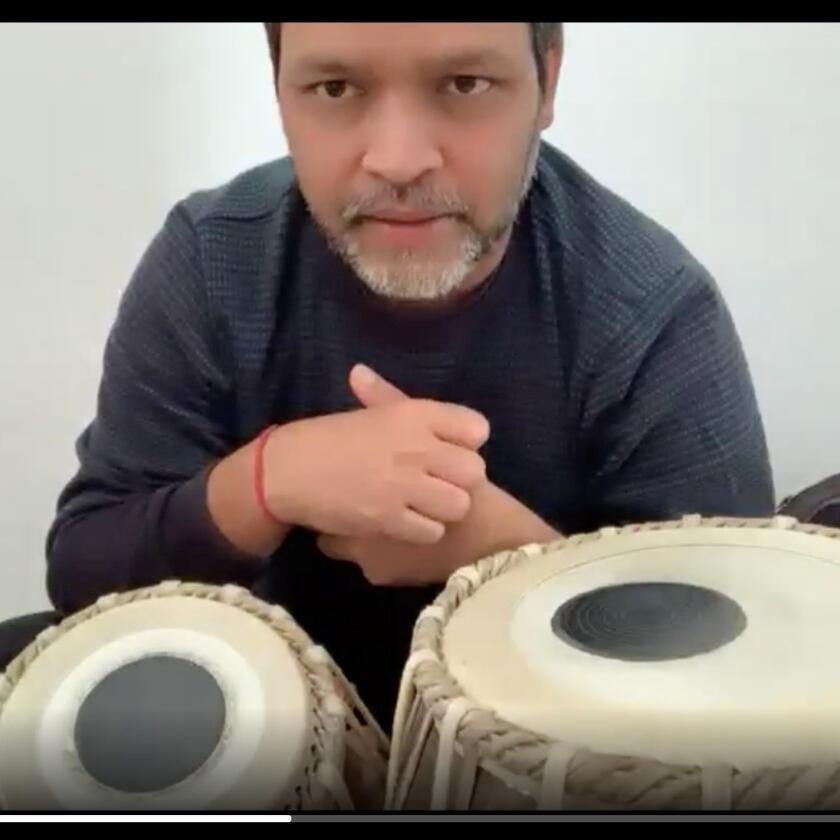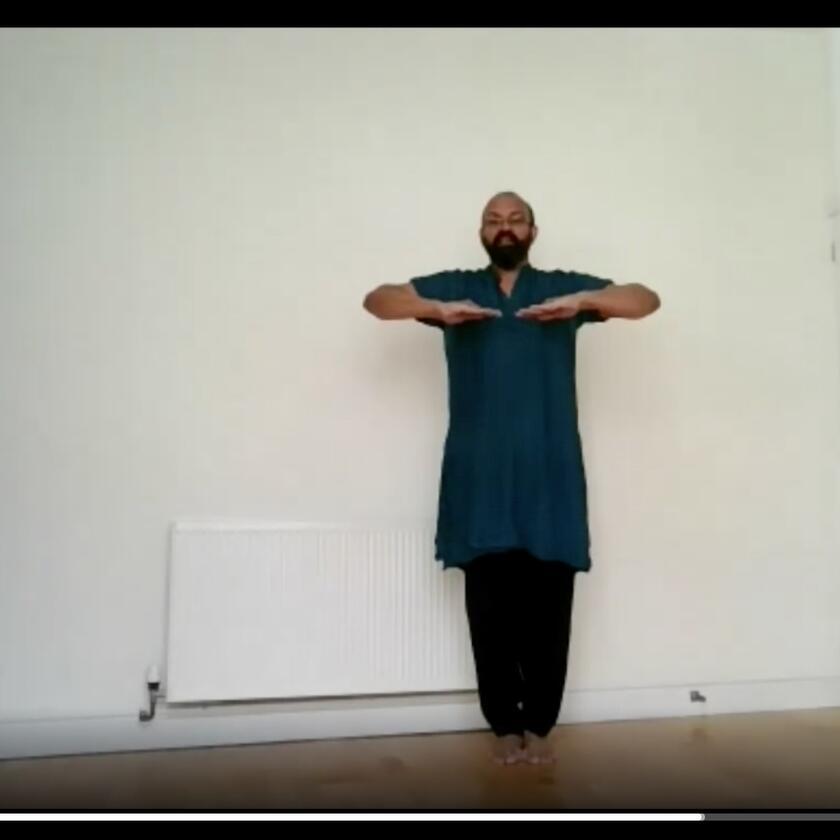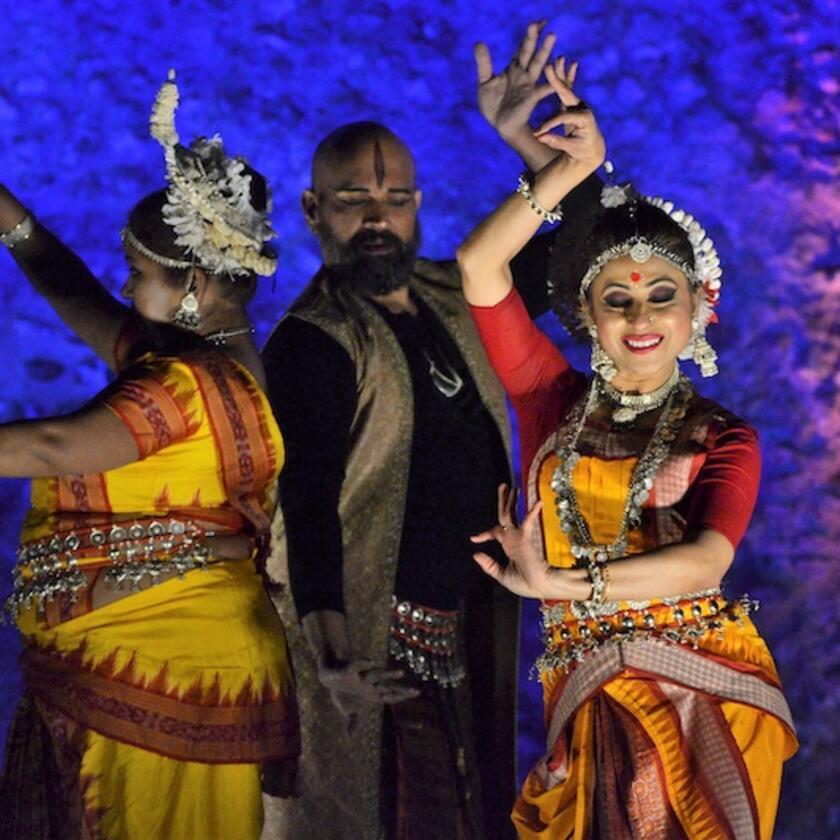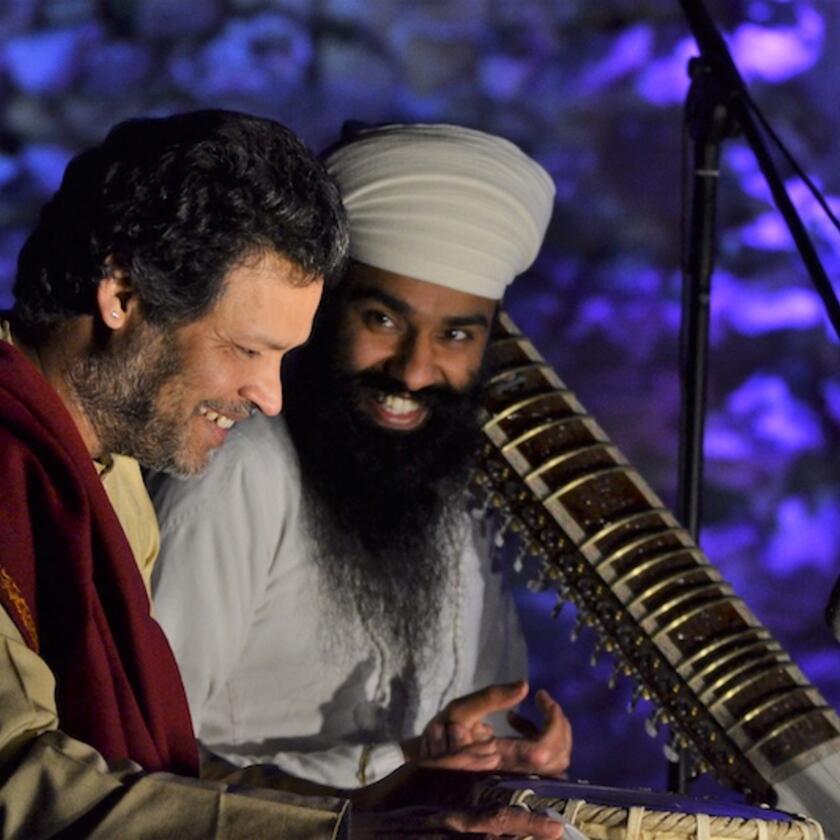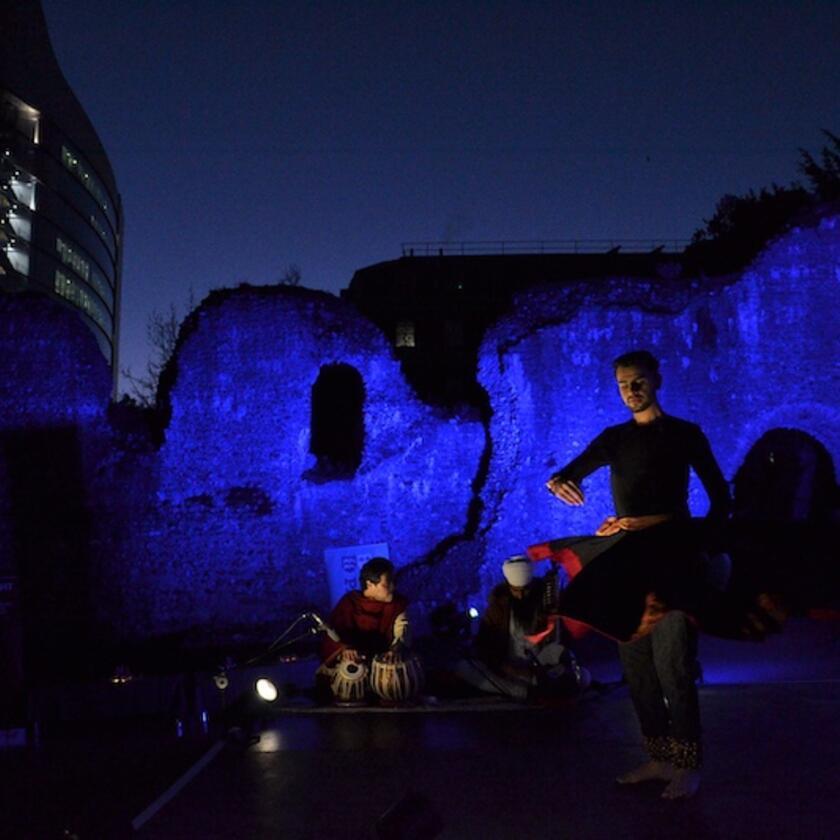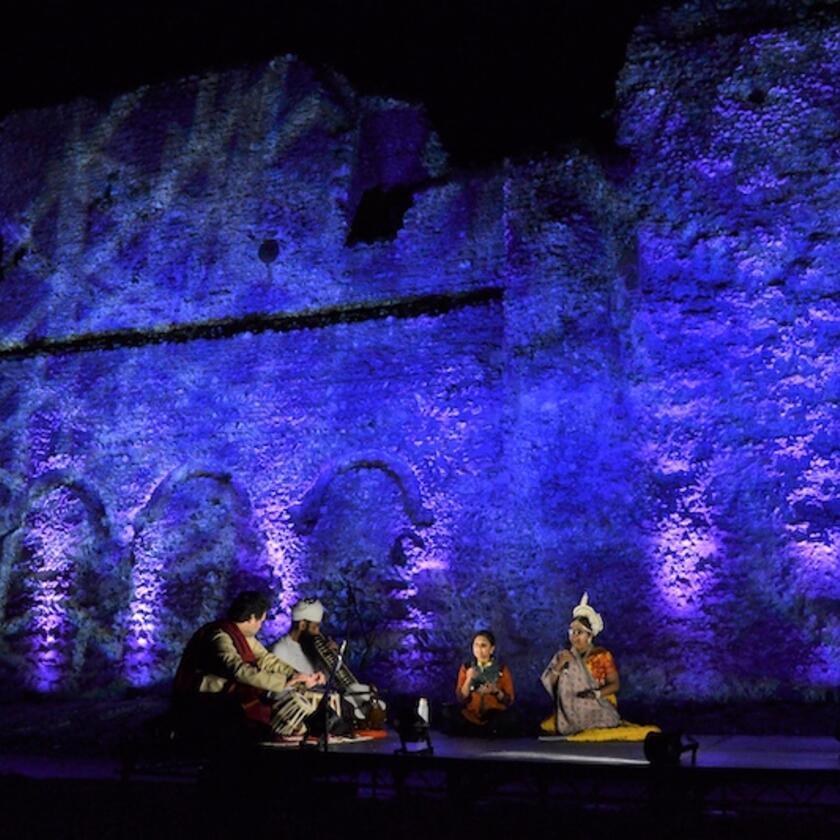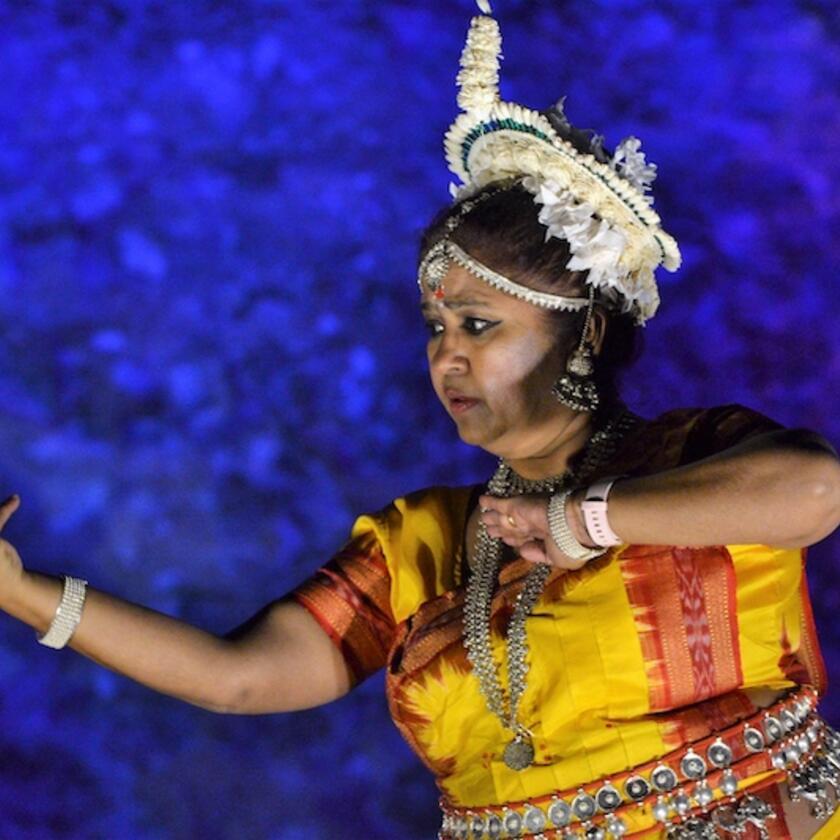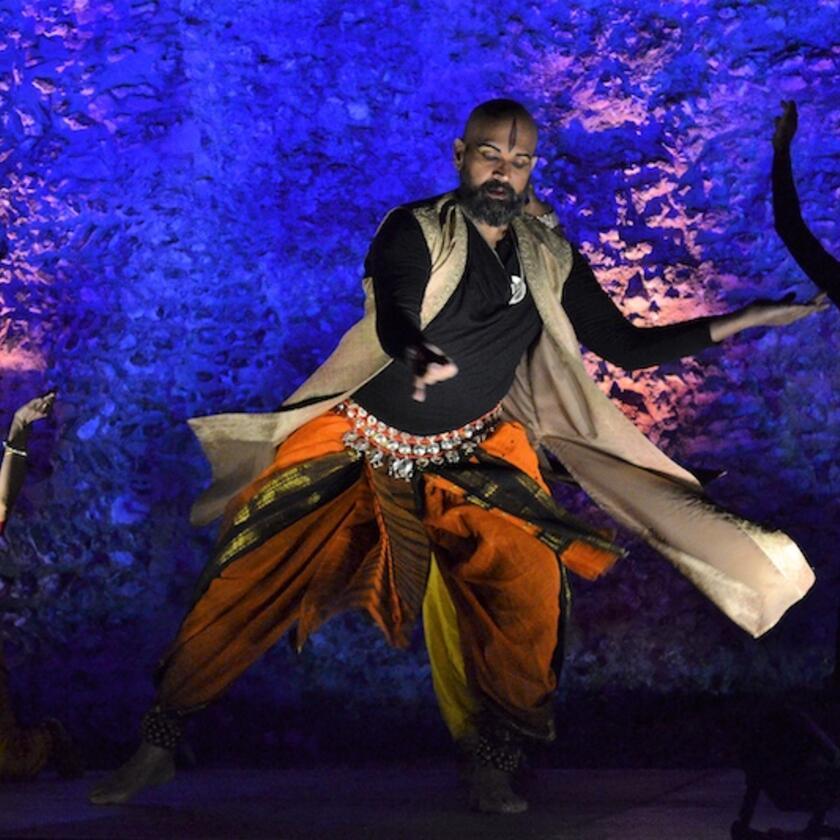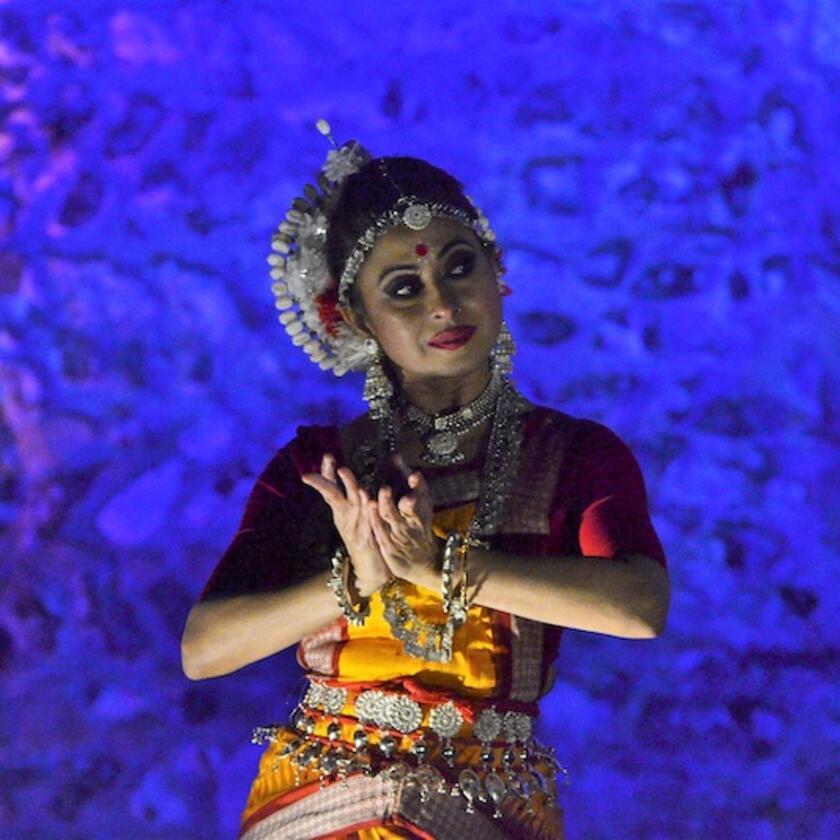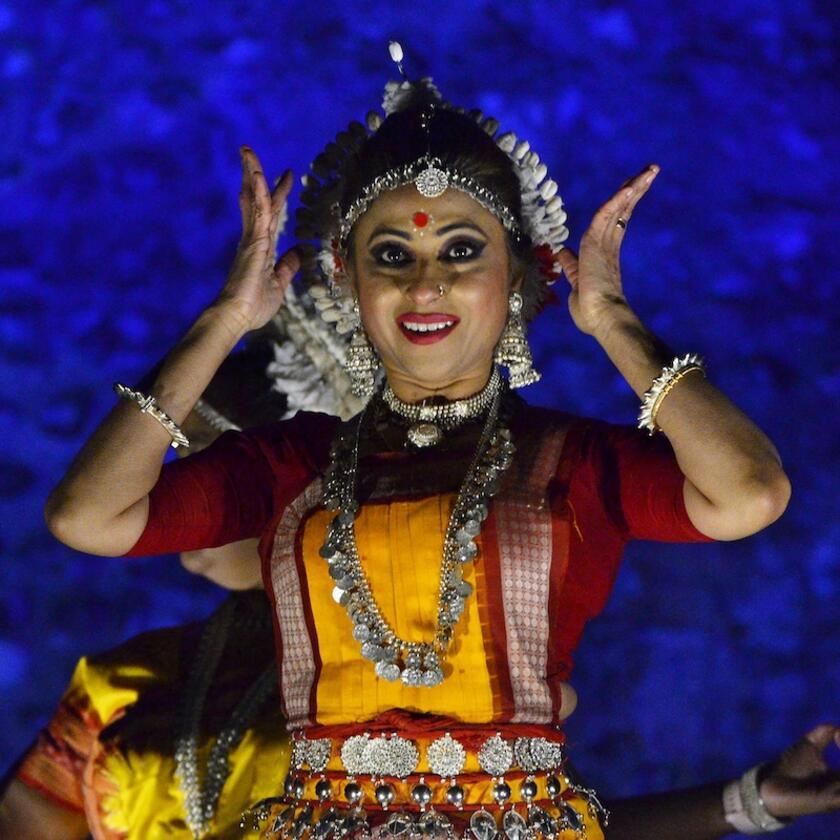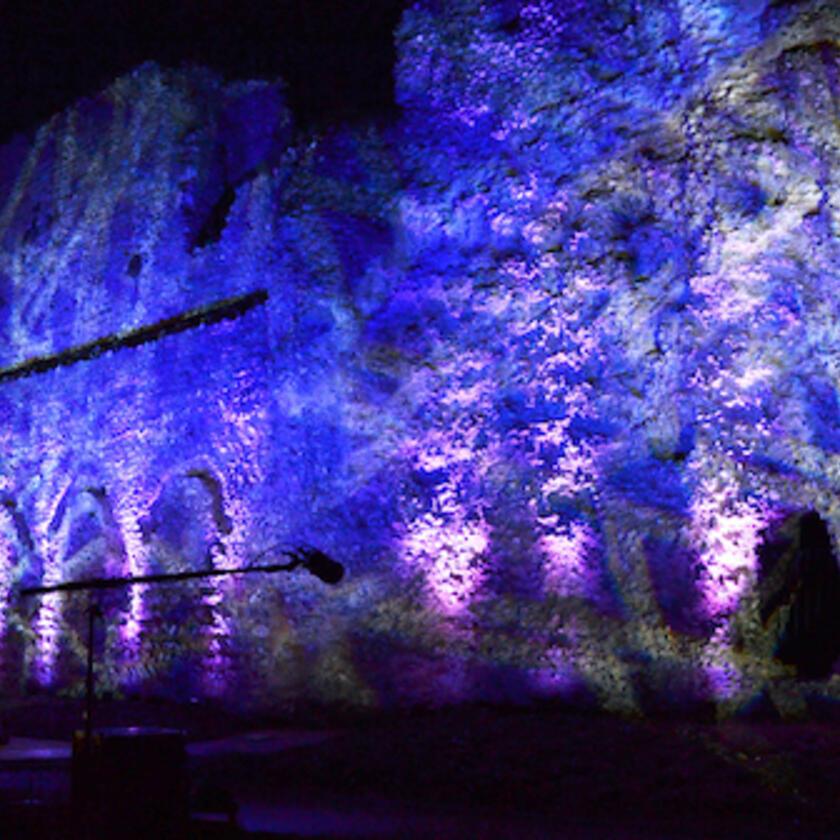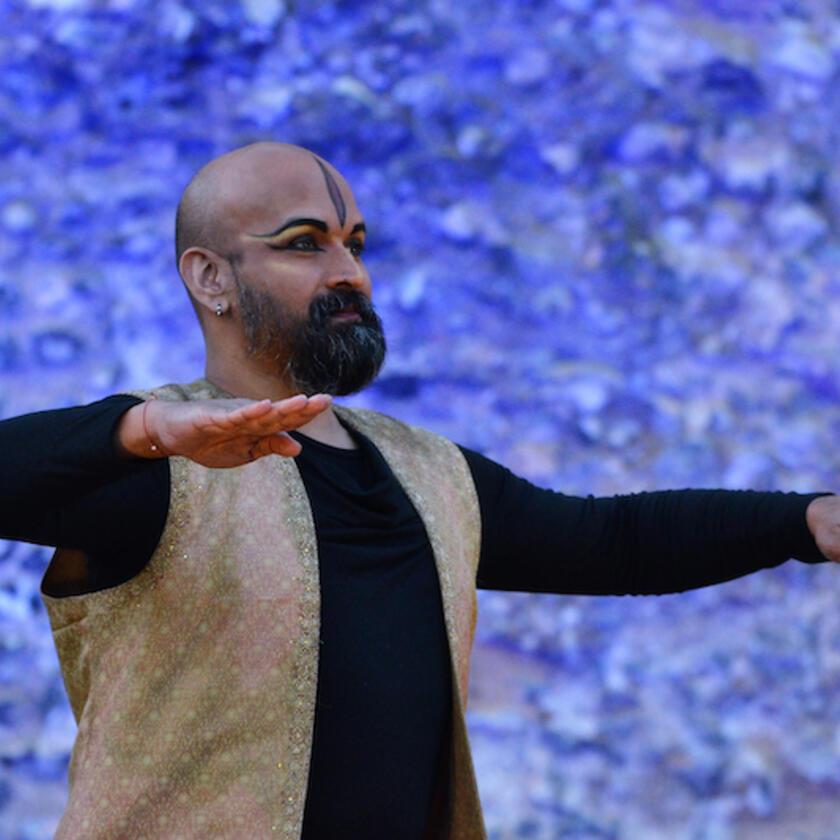Reading Museum and The MERL's Community and School's Project
Reading Museum and The MERL have been working with Kala the Arts, an Odissi Dance organisation, together with schools in Reading on a project of hope, looking forward to the New Year! This project is part of the national Takeover Day, a yearly initiative formed by Kids in Museums.
Teacher training
In September, Kala the Arts Director, Sushmita Pati and professional dance performer, Senjuti Das, trained teachers from Geoffrey Field Junior School and Reading Girls’ School in the basics of Odissi Dance. Odissi dance, also known as Orissi, is one of the eight classical dance forms of India. Its origin is traced to the state of Orissa in eastern India. It is the oldest surviving dance form of India.
Odissi dance consists of body positions like the Chouka, the Tribhangi and the Samabhanga which incorporate steps and hand expressions like the Alapadma (offering flowers) or the Garuda (birds flying). Once you start to combine the positions steps and hand movement, Odissi Dance can build up to very complicated beautiful dances that tell a story. Our teachers from Kala the Arts developed simple dances to learn, as part of the project, so that teachers could be trained to support their children in practicing the dances after the first workshops.
School's Workshops
After the initial teacher training sessions, we held the children’s workshops in late September. These were Kala the Arts first online workshops with schools but they were able to draw on their experience of holding community workshops over the summer during the first lockdown. It worked very well, with the children really picking up the dance moves!
Reading Girls’ School was a small class of Year 8 children but due to various circumstances it was Year 9 Girls who performed on the day. However, they quickly got to grips with the movement and music. With Geoffrey Field Junior, we worked with a small class from Year 6 which got off to a great start with a fire alarm!
It wasn’t too long before we could get started again and both sessions were really fun with each school taking a different portion of the Rama and Sita story of Diwali. In this story a beloved Rama and his wife Sita are banished to the forest and are attacked by the many-headed demon Ravana, who wants Sita to be his wife. They are able to defeat him and are welcomed back to their Kingdom with rows of lit lamps (diyas) to help them find their way home.
It was great fun to observe these sessions and see the different dances that each class was learning.
Performance in the Ruins
We had hoped to have the schools performing in the Abbey Ruins but were unable to allow the children to visit the site due to various restrictions of the second COVID lockdown.
Instead, just before the lockdown, we were able to film Kala the Arts performing for Diwali in the dormitory of the Abbey Ruins. It was a truly wonderful performance that we were very happy to share with the schools for their online performance as part of Reading Museum and the MERL’s school project.
You can see how stunning the performance was in the gallery at the bottom of the page and in the linked video, below, of Kala the Arts performing in the Ruins!
Online School Event
The event was an incredible success with two schools performing online. The Mayor very kindly recorded an opening speech for the event and the children were very impressed by the video of Kala the Arts performing the dances they had been learning. It gave them a great opportunity to see how it might have looked had they been able to perform in the Abbey Ruins!
The children then performed their section of the story, starting with Reading Girls and their scene set in the Palace. Then Geoffrey Field performed the section of the story set in the forest where Rama and Sita were banished.
Finally Geoffrey Field Junior performed the Diwali dance that Sushmita had taught them using battery-lit Diya lamps.
We would like to thank all the children who took part for working so hard and performing so beautifully!
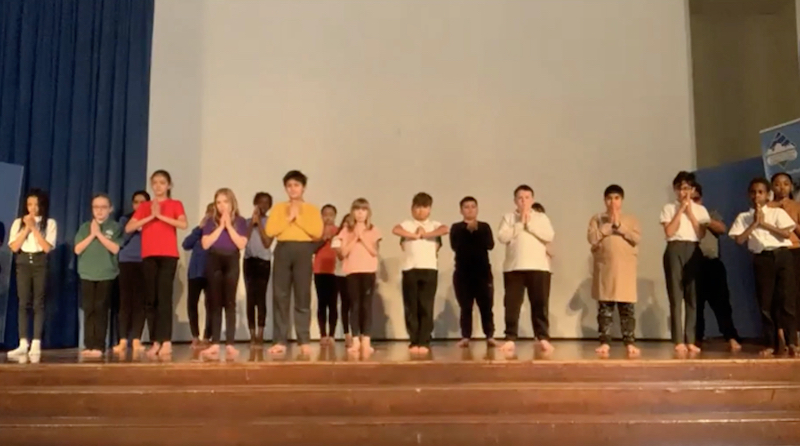
Geoffrey Field Junior School
GLOW
The MERL held an online late celebrates Diwali as part of the Being Human Festival. Before the second lockdown they were able to film artist Bhajan Hunjan, creating a stunning Rangoli inspired by the Harvest Jug in the collection. Rangoli are geometric designs laid outside of homes as decoration during Diwali. They are often created using brightly coloured powders made from rice, sand or sometimes quartz as well petals. We have also been able to share some of the performance of Kala the Arts dancers and musicians performing in the Ruins.
As part of the run up to this event, The MERL was able to hold some fantastic Object Encounters over the October half-term. Sharing seasonal objects from the collection related to the theme of Autumn and Harvest to coincide with the seasonal celebration of Diwali. Due to restrictions the public were unable to handle the objects but visitors were very happy to get a closer look at items like the strickle horn (an item usually covered in lard and sand to sharpen cutting tools in the field over harvest) that many had never even heard of!
Well done!
This has been an incredibly successful project and event. We are very grateful that we have been able to work with The MERL, Kala the Arts as well as our two very committed schools, Geoffrey Field Junior and Reading Girls School. It has been a project of overcoming obstacles and we would like to thank all who have been involved!

